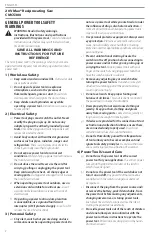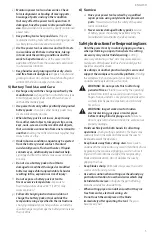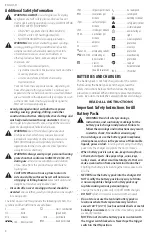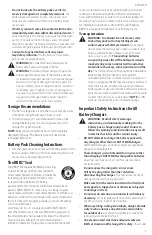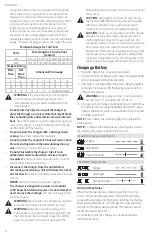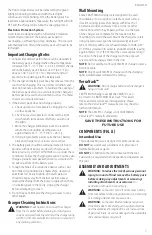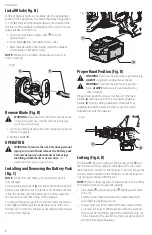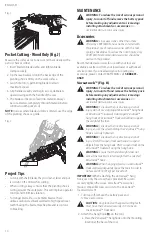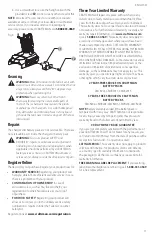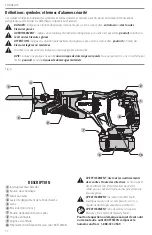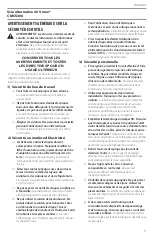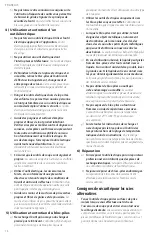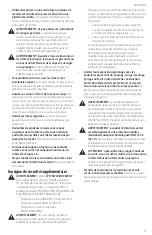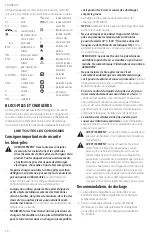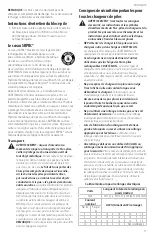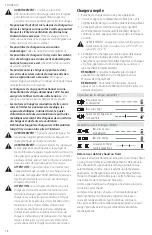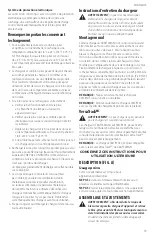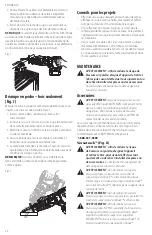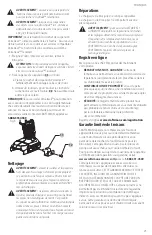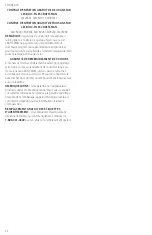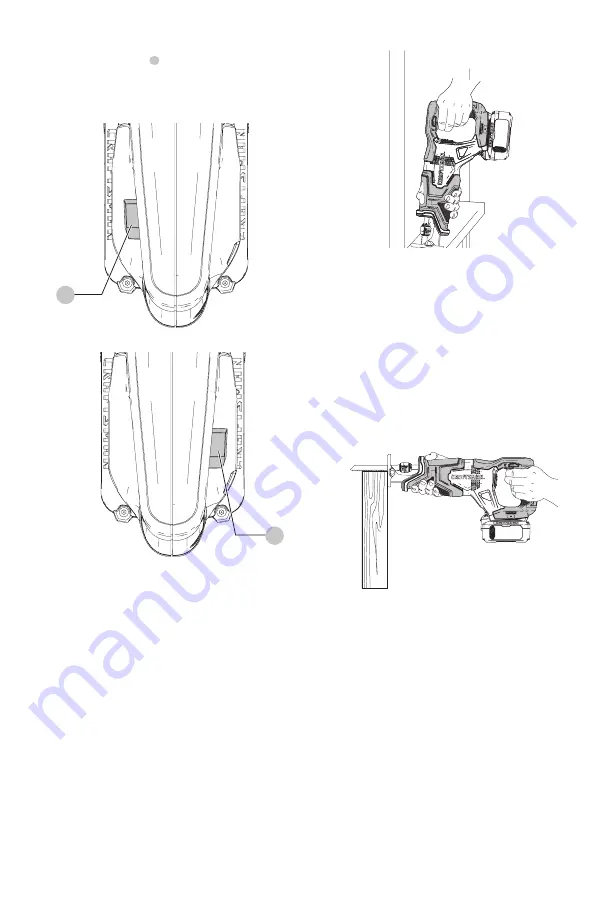
9
English
Lock-Off Button (Fig. E, F)
Release the lock-off button
2
by sliding the switch to the
unlocked position shown in Figure E. To lock the trigger
while the tool is not in use slide the lock-off button in the
opposite direction shown in Figure F.
Fig. E
2
Fig. F
2
Trigger On/Off Switch (Fig. A)
• Pull the trigger switch to turn the motor ON.
• Releasing the trigger turns the motor OFF.
nOTE:
This tool has no provision to lock the switch in the
ON position, and should never be locked in the ON position
by any other means.
Flush Cutting (Fig. G)
The compact design of the recipro cating saw motor housing
and pivoting shoe permit close cutting to floors, corners and
other difficult areas.
1. To maximize flush cutting capabilities, insert the blade
shaft into the blade clamp with the teeth of the blade
facing up.
2. Turn the saw upside down so you are as close to the
work surface as possible.
Fig. G
Wood Cutting (Fig. H)
1. Before cutting any type of wood, be sure the work piece
is firmly anchored or clamped to prevent slipping.
2. Place blade and pivoting shoe firmly against work
to be cut.
3. Switch on saw motor before starting the cut.
4. Always hold saw firmly with both hands while cutting.
Whenever possible, the pivoting shoe must be held
firmly against the material being cut. This will prevent
the saw from jumping or vibrating and minimize
blade breakage.
Fig. H
Metal Cutting (Fig. I)
1. Use a finer blade for ferrous metals and a coarse blade
for non-ferrous materials.
2. In thin gauge sheet metals it is best to clamp wood to
the underside of the sheet. This will ensure a clean cut
without excess vibration or tearing of metal.
3. Avoid forcing cutting blade as this reduces blade life and
causes costly blade breakage.
nOTE:
You should spread a thin film of oil or other coolant
along the line ahead of the saw cut for easier operation
and longer blade life. For cutting aluminum, kerosene
is preferred.




